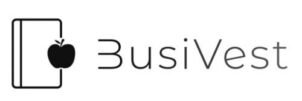Explore 5 powerful business models that scaled from zero to ₹100 crore in India. Real-world examples, strategies, and what made them work in 2025.
Every big company once started small — many from a garage, college dorm, or tiny 1BHK apartment.
But how do you go from zero to ₹100 crore?
The truth is, there’s no magic. But there are business models that consistently work in India’s fast-evolving economy — especially when paired with execution, timing, and market understanding.
In this article, we break down 5 real-world models that went from bootstrapped beginnings to 100-crore businesses — and what you can learn from them.
📦 1. Direct-to-Consumer (D2C) Brands
🔹 Example: Mamaearth
-
Started: ₹0, 2016
-
Now: ₹1,000+ crore revenue
-
Founder: Ghazal & Varun Alagh
💡 What Worked:
-
Laser-focused on millennial moms
-
Built trust through influencer-led marketing
-
Launched fast-moving SKUs via feedback loops
-
Distribution via own site + marketplaces
⚙️ Key Takeaways:
-
Pick a niche with pain points
-
Control the experience via your own channel
-
Use performance marketing to scale
🍴 2. Cloud Kitchen Model
🔹 Example: Box8 / EatSure
-
Started: ₹0, 2012
-
Now: ₹300+ crore annual run rate
💡 What Worked:
-
Full-stack food delivery model
-
Controlled operations = consistent taste & cost
-
Focus on Indian + Fusion food (localized)
-
No dine-in = lower overheads, scalable with data
⚙️ Key Takeaways:
-
Go full-stack for quality control
-
Use tech to optimize delivery and kitchen ops
-
Focus on repeatability, not just viral growth
💻 3. SaaS for SMEs (Software-as-a-Service)
🔹 Example: Khatabook
-
Started: ₹0, 2018
-
Now: Used by 10M+ merchants
-
Freemium model + future monetization layers
💡 What Worked:
-
Solved a core problem: digital bookkeeping
-
Viral growth via regional language support
-
Built trust with India’s unorganized retail market
⚙️ Key Takeaways:
-
Start with “free” but high value
-
Solve real problems for MSMEs
-
Monetize via lending, premium tools, or API layers
🛒 4. B2B Commerce Platforms
🔹 Example: Udaan
-
Started: ₹0, 2016
-
Now: Valuation over $3B
💡 What Worked:
-
Built a trade platform for retailers and wholesalers
-
Digitized India’s B2B supply chain
-
Huge focus on logistics and trust-based payments
⚙️ Key Takeaways:
-
Think “backbone of Bharat,” not just consumers
-
Solve pain points like credit, delivery, and price discovery
-
Massive opportunity in Tier-2/3 distribution
🎓 5. Content + Community First, Product Later
🔹 Example: Finshots / Ditto Insurance
-
Started: Free newsletter in 2019
-
Launched insurance platform after trust was built
💡 What Worked:
-
Simple, relatable financial content
-
Daily value creation → high email open rates
-
Monetized via trust → high-converting insurance product
⚙️ Key Takeaways:
-
Build audience first → monetize later
-
Use content to establish brand + credibility
-
Product-market fit is easier with a warm audience
🧠 What You Should Learn
🛠️ These 5 models are different, but they all:
-
Solved a real Indian problem
-
Focused on execution before scale
-
Knew their customer deeply
-
Used digital leverage (tech, content, or D2C)
🚀 Bonus: Emerging Models to Watch in 2025
| Model | Description |
|---|---|
| 🎧 Podcast-first Brands | Build trust → monetize via courses/products |
| 🛍️ Regional Ecom Niches | Focus on underserved categories (e.g., Muslim fashion, spiritual tools) |
| 🌿 Organic/Local D2C | Premium farm-to-home products, sustainable living |
| 🧾 Fintech for Freelancers | Tax, savings, credit tools for gig economy |
🧾 Conclusion:
Building a ₹100 crore business isn’t just about money — it’s about picking the right model, knowing your customer, and staying consistent.
In India, opportunities are everywhere — in our streets, kiranas, phones, and culture.
Want to build something real? Study what works. Start small. Scale smart.

